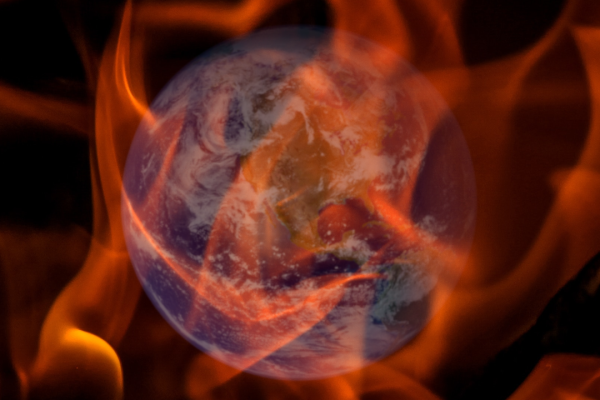INTRODUCTION
Earth Day was first celebrated in 1970 (so this year is the 52nd edition). The chosen day is April 22, one month and two days after the spring equinox. This day, celebrated annually by the United Nations, emphasizes the growing need to conserve the Earth’s natural resources. Only over time did this also become an opportunity to educate and provide information on environmental issues. The possibility of establishing a day like this was already being discussed as early as 1962 when U.S. Senator Gaylord Nelson launched a series of conferences on environmental issues involving Robert Kennedy. That same year also saw the release of Rachel Carson’s bestseller “Silent Spring,” a watershed book. It raised awareness of troubling ecological situations and the inextricable links between pollution and public health. But the turning point came only in 1969 following the environmental disaster caused by an oil spill from the Union Oi well off Santa Barbara, California. Senator Nelson emphasized, “All people, regardless of ethnicity, gender, income or geographic origin, have the right to a healthy, balanced and sustainable environment.” So it was that on April 22, 1970, at the invitation of the same senator, 20 million American citizens took to the streets to demonstrate in defense of the Earth.
IMPORTANCE
Climate change, air pollution, deforestation, land consumption, extinction of plant and animal species, and depletion of natural resources are just some of the serious issues that need to be addressed immediately. One day certainly cannot be enough, but it is still a start, especially every year on this very occasion. We succeed in making new people aware of the importance of reversing course and adopting a change that, first and foremost, must start in our daily lives. Through small choices that are only apparently so but that, in reality, can make a difference. Earth Day is every day since, for 14 years now, we have been contributing to change, convinced that the situation can be changed if each of us makes a personal commitment. So this day should be an incentive to remind us of the ultimate goal, to be achieved gradually daily. There is more sustainable consumption in a world where renewable sources replace fossil fuels. No more toxic pesticides are used, there is equity in the distribution of resources, and no exploitation of animals or intensive farming destroys precious forests or indigenous lands. It is only one day, it is true, but it still puts the Planet and its needs at the center for once. We all reflect together, globally, on what is happening and what needs to be improved, and it is an opportunity to work on people’s awareness, which, in some cases, is still not enough.
SLOGAN
The theme of Earth Day 2023 is “investing in our planet.” If the slogan is not new to you, there is a reason: it has not been changed from the 2022 slogan, as announced by the Earth Day organization on October 20 last year. The reason is that having worked so well, reviving its principles again this year is the best way to raise awareness among the global population to take action to protect Mother Nature. The underlying concept is that we are all responsible for the deterioration of the natural environment, from governments to large corporations to individual citizens with their lifestyles. In light of this premise, it behooves everyone to do their part. “In 2023, we must unite again in a partnership for the Planet. Businesses, governments, and civil society are equally responsible for acting against the climate crisis and igniting the spark to accelerate change toward a green, prosperous, and equitable future. We must unite in our fight for the green revolution and the health of future generations. Now is the time to invest in our Planet,” said Dr. Kathleen Rogers, president of Earthday.org.
CLIMATE CRISIS
The main goal of this green revolution is to promote a shift away from fossil fuels and toward a green transition to renewable sources: solar, wind, geothermal, and sea power. Indeed, climate change catalyzes CO2 (carbon dioxide) emissions and other greenhouse gases known as climate warming derived from human activities. Multiple studies point to a real steepening of the average temperature curve since the Industrial Revolution, with dramatic accelerations in concert with the economic boom. Right now, we are about 1.1° C above the pre-industrial average, and the 1.5° C threshold, beyond which we will face devastating and irreversible consequences, is getting closer. According to the Climate Apocalypse Clock, if we continue to put carbon at these rates into the atmosphere, it is about ten years before it is crossed. For several types of research now, we will not be able to avoid the overshoot no matter what we do, but that does not mean it is still essential to cut carbon emissions sharply and rapidly. Because with each step of half a degree more, the consequences become more significant and more catastrophic for human survival and that of the millions of species that inhabit the Earth.
BIODIVERSITY
But it is not only global warming that experts are concerned about. Deforestation, intensive use of pesticides and other toxic compounds, plastic pollution, poaching, urbanization, intensive livestock farming, overfishing, and fragmentation of natural habitats are just a few of the elements cracking our relationship with the natural world. “From the air, we breathe to the water we drink to the soil that grows our food: humanity’s health depends on the health of Mother Earth. Yet we seem determined to destroy her,” the UN said in a statement relaunched for Earth Day. “Our actions devastate forests, jungles, farmlands, wetlands, oceans, coral reefs, rivers, seas, and lakes. Biodiversity is collapsing as a million species teeter on the brink of extinction. We must end these relentless and senseless wars against nature. We have the tools, the knowledge, and the solutions. But we need to pick up the pace,” the organization quipped. The recent decision to protect 30 percent of the oceans and 30 percent of the landmass (30×30) by 2030 is considered historical precisely because it goes in the right direction. The same cannot be said for cutting emissions, considering that almost all countries committed to doing so are not on track to achieve carbon neutrality by 2050.
ACTIONS
The Earth Day organization stresses that a change of pace is essential for businesses, investors, and financial markets, which “must generate value for their institutions and society through innovation and green practices.” On the other hand, governments are expected to promote the public interest by putting in place “a fair and sustainable global economic system,” focusing mainly on funding renewables and penalizing fossil fuels. On the other hand, individual citizens must lobby “for sustainable solutions in every respect, as voters and consumers.”







